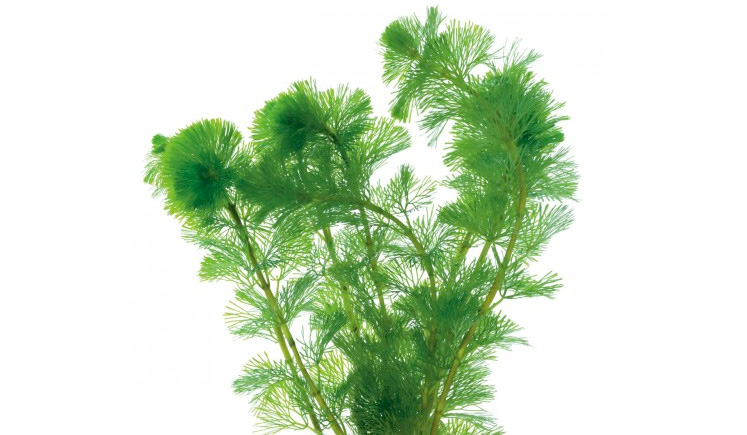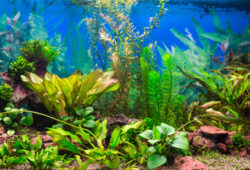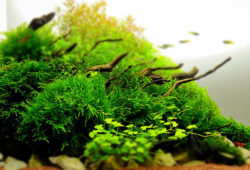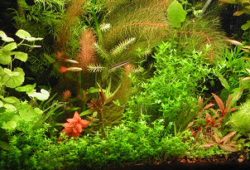Let the buyer beware
In the article I’ll tell you about why it is important to Let the buyer beware. Aquatic plants can really make an aquarium, but I am amazed at how many retailers sell houseplants as aquatic plants. When I challenged a few on how they could sell them, I was told that their customers liked these plants. In any case, I was told, it did not matter that the plants only lived six weeks as customers liked changing them!

I find this hard to believe as this can be a very expensive option. Take the average price of 2.60 per plant every six weeks. One unsuitable plant could end up costing 20 a year, and four or five would mean 100 down the drain.
Even mail-order companies are guilty of this and advertise terrarium plants as aquatic or marsh plants. Now although some terrarium plants enjoy damp conditions, they most certainly will not survive any prolonged period of submersion and will inevitably rot. This can seriously disrupt the delicate balance in your tank, and if you have too many of them, will pollute the tank, harming your fish. Besides, rotting plants do not look attractive.
This brings me to another ‘bugbear’ of mine – labelling. If plants were labelled properly, with their proper Latin name rather than one of a myriad common names, buyers could easily research plants and select according to their water conditions. And with plants thriving, just think how much more satisfying the hobby could become.
Avoid like the plague…
Spathiphyllum wallisii and Ophiopogon japonica are terrarium plants. Within a few weeks in the aquarium, all you’ll have is a pile of rotting stems and leaves. However, pot up S. wallisii with papyrus in John Innes No 3 compost, in 5cm/2″ of water, and you’ll have a stunning feature bog plant. They are ideal for offices and are maintenance free.
Many terrarium plants can, in fact, be incorporated into a highly efficient vegetable filter to extract nitrates and phosphates. Simply place them in a trough and let the water pass through and back into the tank. They can also be grown hydroponically, which is slowly becoming more popular.
Another houseplant that is sold as an aquatic plant is the attractive Parlour palm, Chameadorea elegans. But seriously, did you ever expect a palm to grow under water? All you’re doing is drowning the plant!
Other plants to avoid are Aglaonema, Caladium, Calamus palmae, Chlorophytum, Coras, Cordyline, Cyperus, Diffenbachia, Dracaena, Fittonia, Ophiopogon, Schismatoglottis, Syngonium and Asplenium trichomanes. If any reader knows of other houseplants being sold to the aquatic trade, please let me know so I can add them to the list.
However, what really gets me angry are retailers who on the one hand sell terrarium plants for the aquarium and on the other sell high-tech equipment costing hundreds of pounds to the customer so they can grow plants! Even the highest tech system will fail to grow terrarium plants in an aquarium.
Shops that wish to provide a good service should at least label their plants so that you, the customer, can do your homework. When you next buy plants, if they are not labelled properly (or at all), be pro-active and ask your retailer whether the plant is suitable for your aquarium and water. Unless you do this, you will have no comeback if the plant falls to bits.
Know your water
If you wanted to keep Rummynoses or Rams, you’d make sure you had soft water. And if you wanted to breed African cichlids, you would ensure they were kept in hard water. Now I know I’ve said this before, but you need to take the same care with your plants.
Different plants suit different water conditions, and knowing your water parameters will help you choose suitable plants. Many plants such as Hygrophila, most crypts and Ludwigia tolerate all water conditions. But Vallis, for instance, is a hardwater plant that will fall to bits in days if kept in soft, acidic water. Yet Glossostigma elatinoides thrives in soft, acid water with a pH of 5.5-5.7.
Obviously monitoring your water conditions is also important. Test kits will reveal the amount of nitrate, nitrite, phosphate, ammonia etc in your water, but vary in accuracy. PFK has tested the performance of many kits in previous buyer’s guides, some of which are on this website.
Over the years I have written about hundreds of plants to try – some which are easy to grow, others that are more of a challenge. All are worth the effort. But if the hobbyist fails repeatedly, frustration will set in and he could pack it all in, especially if it starts to get expensive…
Surely in the long term it makes more sense for customers to be advised correctly and supplied with good quality plants that they will succeed with and get great pleasure from. With confidence, this same hobbyist could then be encouraged to try more exotic plants. Surely this can only bring good to the hobby?



